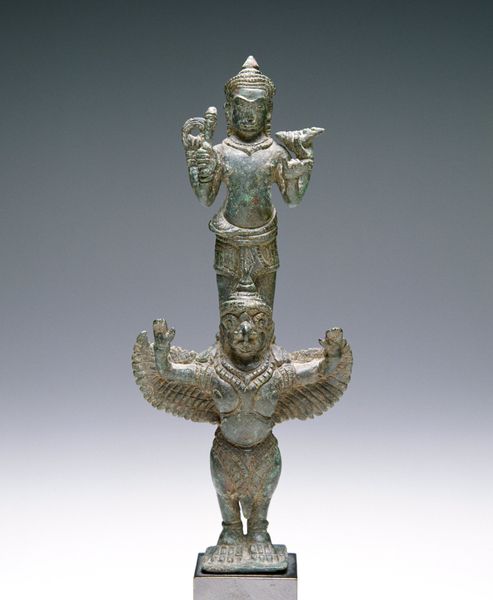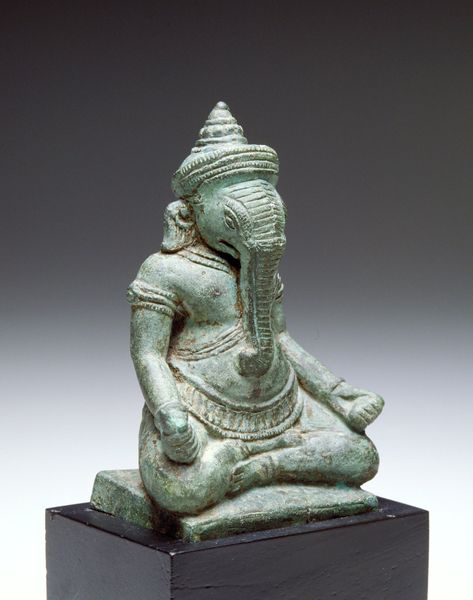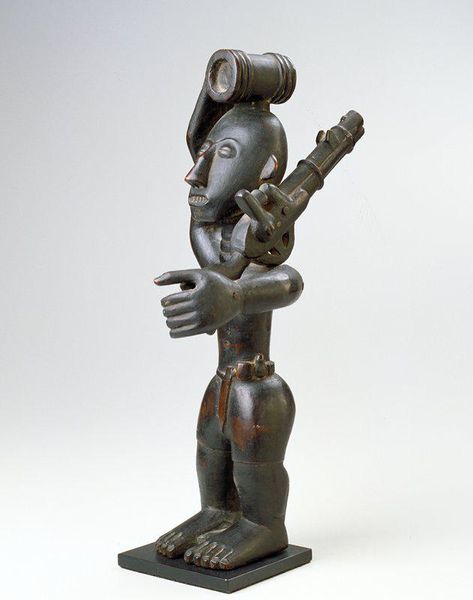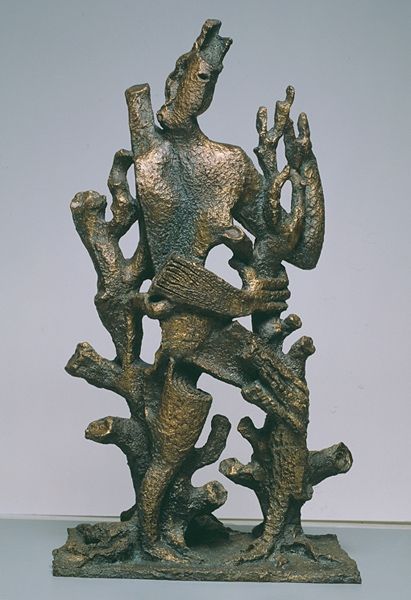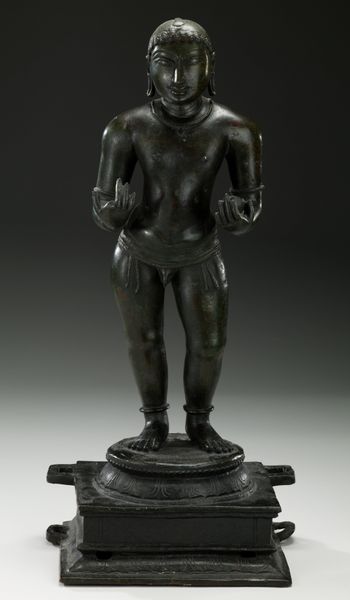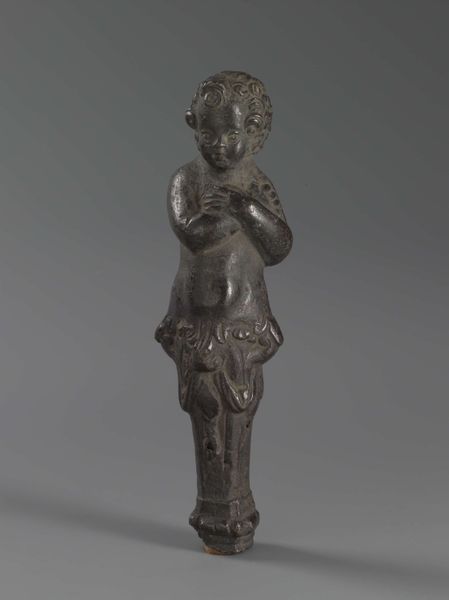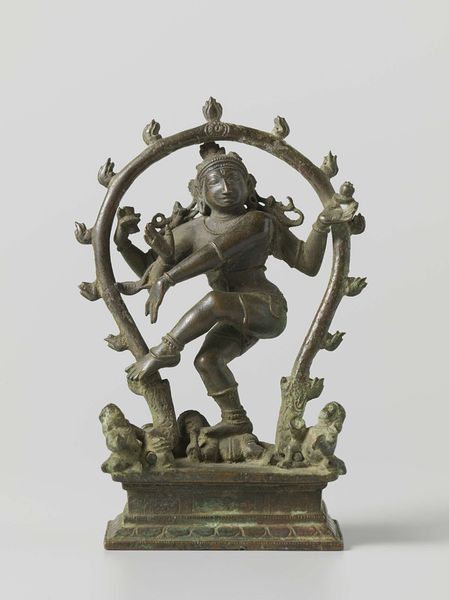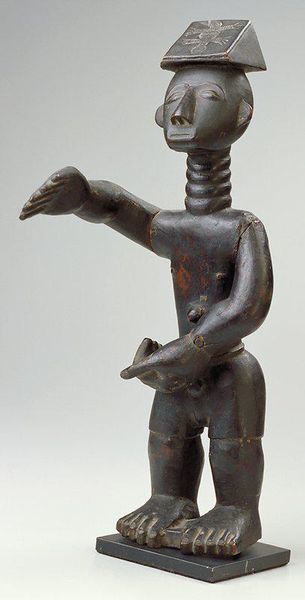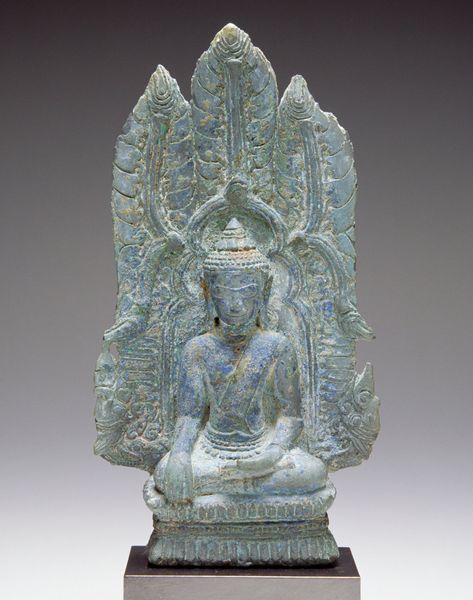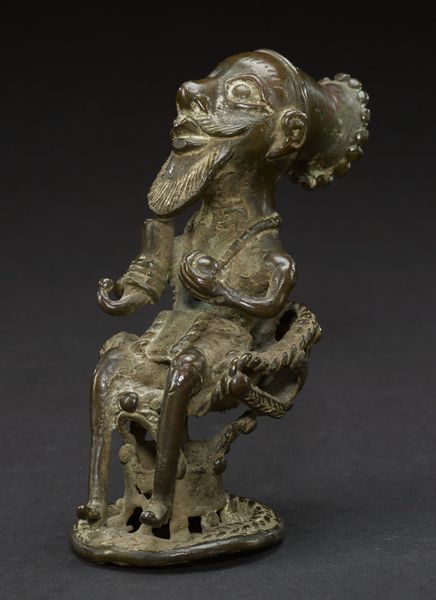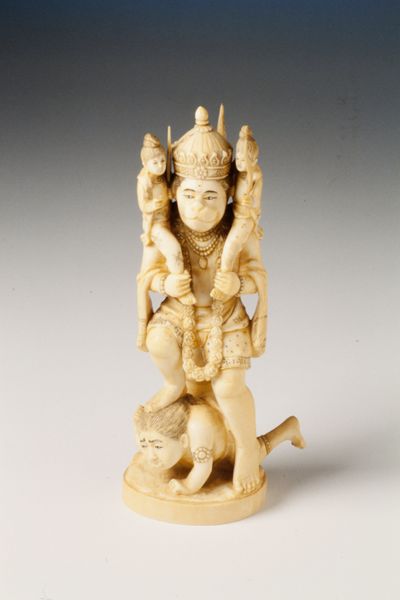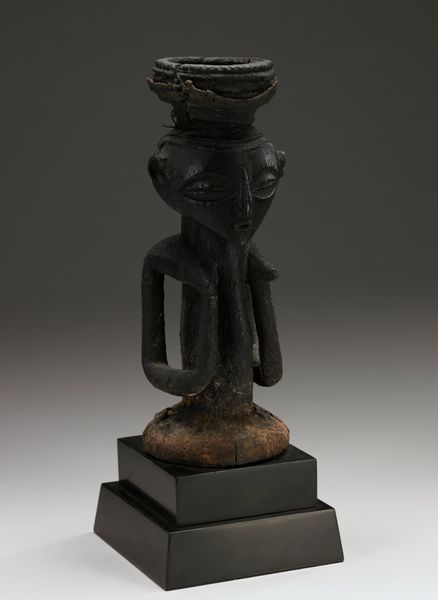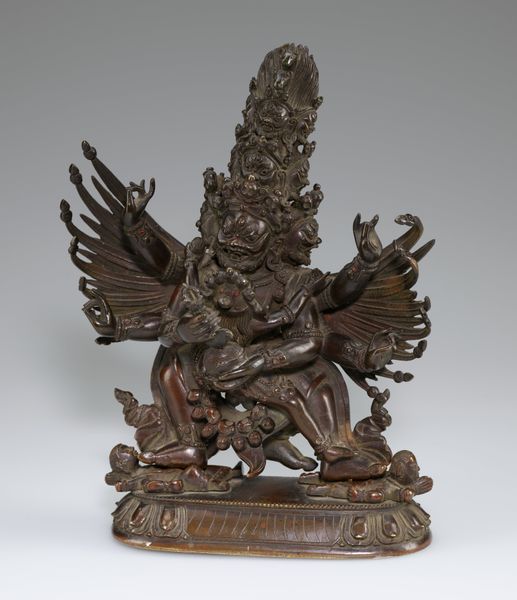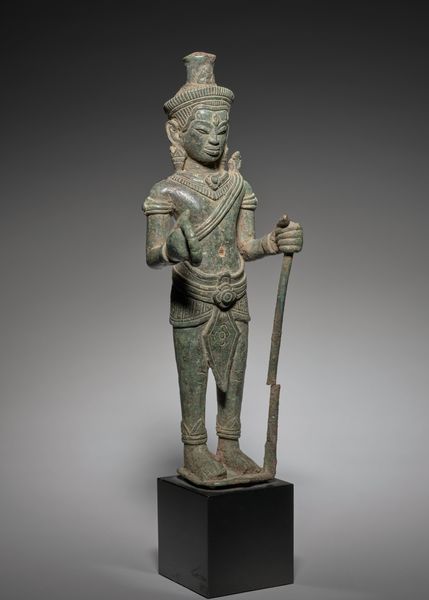
bronze, sculpture
#
medieval
#
sculpture
#
asian-art
#
bronze
#
figuration
#
sculpture
Copyright: Public Domain
This bronze sculpture of Sadashiva, whose maker and date of creation are unknown, presents a fascinating study in material and process. The very nature of bronze, an alloy of copper and tin, speaks to a sophisticated understanding of metallurgy. Creating this figure required mining, smelting, and alloying these metals. The lost-wax casting process, likely employed here, demands a mastery of sculpting, mold-making, and careful firing to achieve such detail. The multiple heads and arms of Sadashiva could have been cast separately and joined, or cast all at once using the lost wax casting. This would require even more specialized skills of mould making. The resulting patina, that greenish surface oxidation, adds to its aura, hinting at age, ritual use, and burial. But don’t be fooled; patina is a complex phenomenon. The way it develops depends on local atmospheric conditions, as well as deliberate interventions by conservators. Considering the production, and post-production, of this Sadashiva sculpture invites questions about who made it, and how their labor has shaped the object we see today. The knowledge and skill embedded in this bronze are just as important as its iconography.
Comments
No comments
Be the first to comment and join the conversation on the ultimate creative platform.
